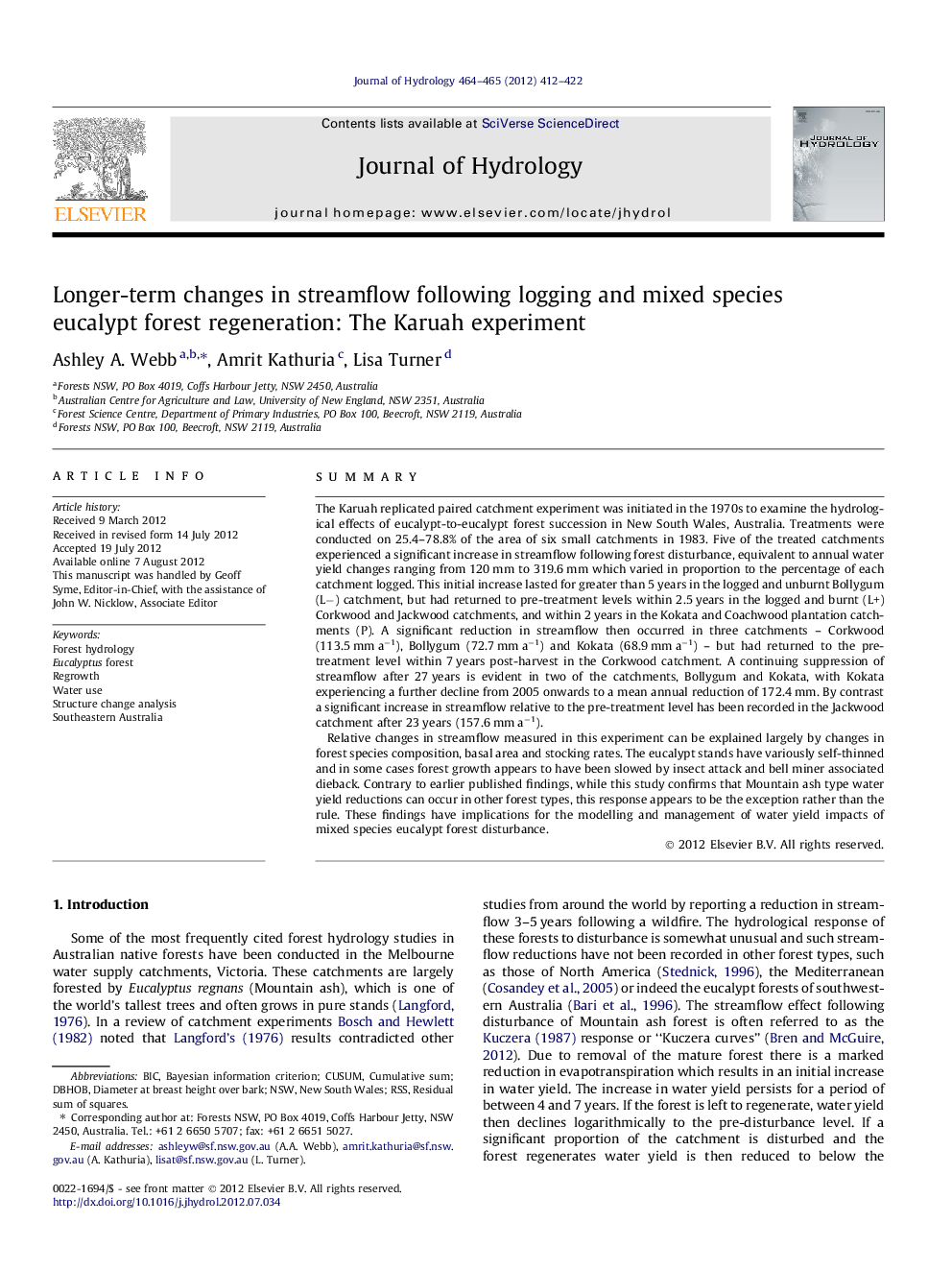| کد مقاله | کد نشریه | سال انتشار | مقاله انگلیسی | نسخه تمام متن |
|---|---|---|---|---|
| 6413908 | 1629979 | 2012 | 11 صفحه PDF | دانلود رایگان |

SummaryThe Karuah replicated paired catchment experiment was initiated in the 1970s to examine the hydrological effects of eucalypt-to-eucalypt forest succession in New South Wales, Australia. Treatments were conducted on 25.4-78.8% of the area of six small catchments in 1983. Five of the treated catchments experienced a significant increase in streamflow following forest disturbance, equivalent to annual water yield changes ranging from 120 mm to 319.6 mm which varied in proportion to the percentage of each catchment logged. This initial increase lasted for greater than 5 years in the logged and unburnt Bollygum (Lâ) catchment, but had returned to pre-treatment levels within 2.5 years in the logged and burnt (L+) Corkwood and Jackwood catchments, and within 2 years in the Kokata and Coachwood plantation catchments (P). A significant reduction in streamflow then occurred in three catchments - Corkwood (113.5 mm aâ1), Bollygum (72.7 mm aâ1) and Kokata (68.9 mm aâ1) - but had returned to the pre-treatment level within 7 years post-harvest in the Corkwood catchment. A continuing suppression of streamflow after 27 years is evident in two of the catchments, Bollygum and Kokata, with Kokata experiencing a further decline from 2005 onwards to a mean annual reduction of 172.4 mm. By contrast a significant increase in streamflow relative to the pre-treatment level has been recorded in the Jackwood catchment after 23 years (157.6 mm aâ1).Relative changes in streamflow measured in this experiment can be explained largely by changes in forest species composition, basal area and stocking rates. The eucalypt stands have variously self-thinned and in some cases forest growth appears to have been slowed by insect attack and bell miner associated dieback. Contrary to earlier published findings, while this study confirms that Mountain ash type water yield reductions can occur in other forest types, this response appears to be the exception rather than the rule. These findings have implications for the modelling and management of water yield impacts of mixed species eucalypt forest disturbance.
⺠Changes in streamflow due to mixed species eucalypt forest treatment were assessed. ⺠In five of six treated catchments streamflow initially increased. ⺠Flow declined to below the pre-treatment level in three catchments. ⺠After 27 years only two catchments exhibit a continuing decline in streamflow. ⺠Streamflow response to disturbing these forests differs from Mountain ash forests.
Journal: Journal of Hydrology - Volumes 464â465, 25 September 2012, Pages 412-422